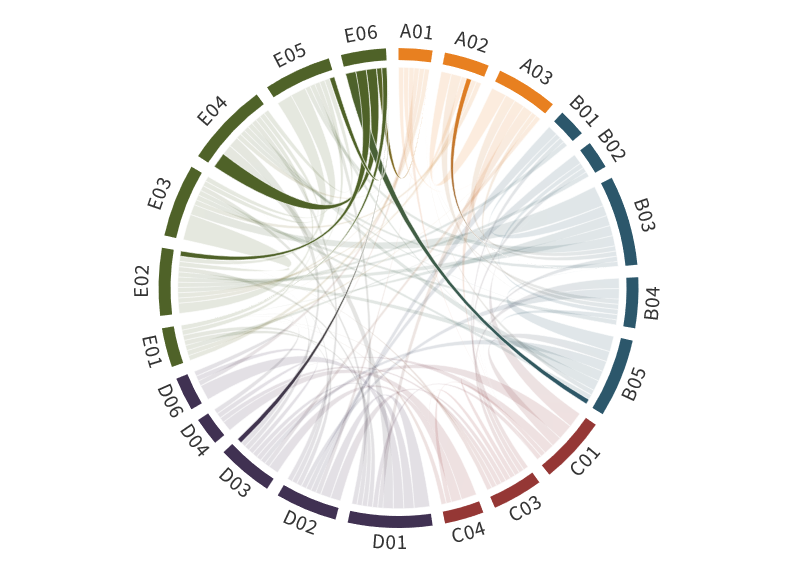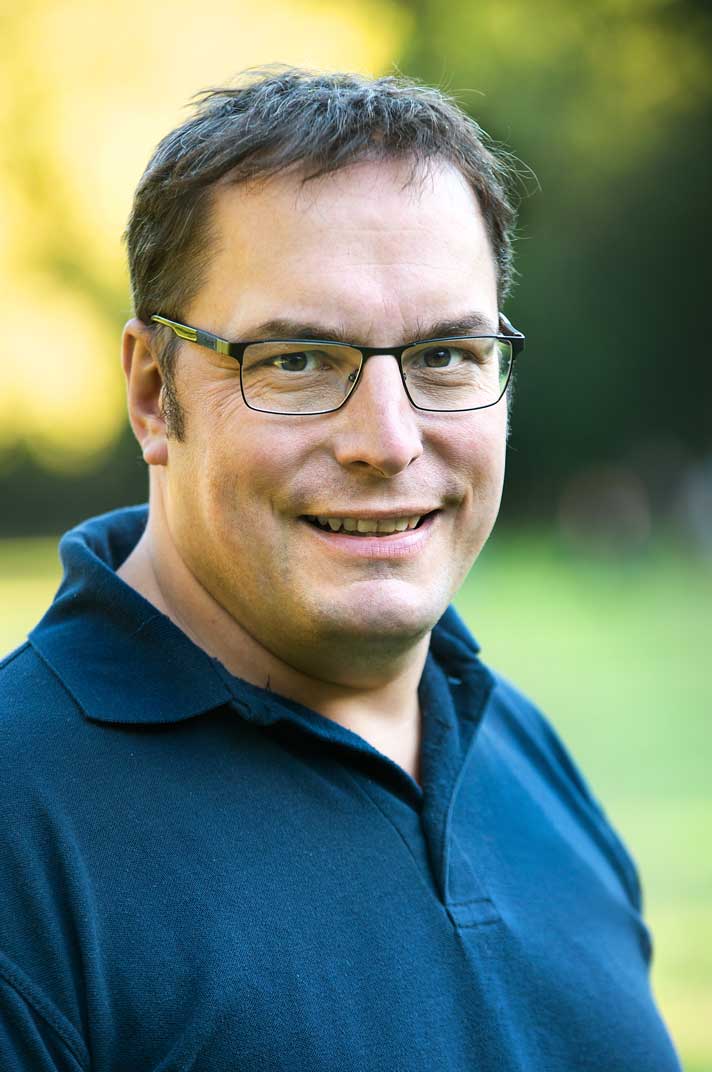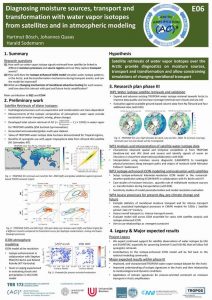E06: Diagnosing moisture sources, transport and transformation with water vapor isotopes from satellites and in atmospheric modeling
PIs: Hartmut Bösch, Johannes Quaas
The rapidly changing Arctic region shows a moistening trend over the last forty years, feeding back on energy fluxes and precipitation. This moisture trend can be partly explained by local changes in air temperature and sea ice cover while the contribution of changing moisture transport to the Arctic is less clear. This is a critical question for Arctic amplification as transport of moisture from lower latitudes into the Arctic is the dominant moisture source for the Arctic. It is important to understand the fate of moisture transport into the Arctic – how intrusions further moisten through surface evaporation, or dry via precipitation or mixing with the environment. Enhanced warming of the Arctic further leads to a strengthening of meridional transport due to enhanced amplitudes and stationarity of the Rossby waves. Such changes in atmospheric circulation and in air mass properties during meridional transport due to an enhanced warming of Arctic air temperatures are not well captured by current global climate models. To improve model predictions, a better understanding of air mass transport and transformation on their way into and out of the Arctic is needed. Measurements of water vapor isotopes can play an important role as the isotopic composition carries signatures of moistening, precipitation and mixing. This exploits the fact that in particular condensation and evaporation depend on the molecular mass. Isotopes thus provide information how water is transported and transformed from the major sources to the Arctic.
In this project, we will extend and improve the existing satellite retrieval of the water isotope HDO from the TROPOspheric Monitoring Instrument (TROPOMI) for the Arctic and use this data in conjunction with data from Infrared Atmospheric Sounding Interferometer (IASI) and the Atmospheric Infrared Sounder (AIRS). Observed isotopic signatures will be characterised and evaluated for moisture intrusion events and interpreted using Lagrangian moisture source diagnostic extended to water isotopes to add information about physical processes and origins of moisture. We will evaluate an isotope-enhanced version of the ICOsahdral Non-hydrostatic (ICON) kilometer-resolution model (in collaboration with Stephan Pfahl, Free University Berlin and Roland Ruhnke, Karlsruhe Institute of Technology) against satellite retrievals and surface observations to assess the source, transport, and transformation mechanisms. Simulations for present-day climate (evaluation), historical past before the strong Arctic climate change occurred (1950s) and future (strong-emission scenario) are analyzed to constrain the role of these processes in a changing Arctic climate with inferences for prediction of future Arctic amplification.
Hypothesis:
Satellite retrievals of water vapor isotopes over the Arctic provide diagnostics on moisture sources, transport and transformation and allow constraining simulations of changing meridional transport.
- Specifically we want to answer the following questions:
- How well can water vapor isotope signals retrieved from satellite be linked to different moisture processes and source regions and can they capture transport events?
- How well does the isotope-enhanced ICON model simulate water isotope patterns in the Arctic, and the transformation mechanisms during transport events, and can the model be improved?
- What are changing mechanisms of meridional advective heating for each season, and how does this interact with past and future Arctic amplification?
The goal of this project is to contribute to a better understanding of Arctic amplification by investigating mechanisms for meridional moisture transport into the Arctic using water vapor isotopes and addressing the role of changing transport for Arctic climate. Thus, this project directly responds to theme SQ2 of (AC)³ on the effects of Arctic–midlatitude connections but also contributes to themes SQ1 and SQ3.
Role within (AC)³
Members
Prof. Dr. Johannes Quaas
Principal Investigator
University of Leipzig
Leipzig Institute for Meteorology (LIM)
Stephanstr. 3
04103 Leipzig
Prof. Dr. Hartmut Bösch
Principal Investigator
University of Bremen
Institute of Environmental Physics (IUP)
Otto-Hahn-Allee 1
28359 Bremen




